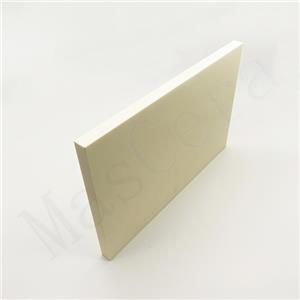Why Is PBN Crucible Preferred in Labs?
1、What Is a Crucible?
A crucible is a container used to heat or melt substances at high temperatures. Modern crucibles can be made from any material resistant to high temperatures, with pyrolytic boron nitride (PBN) being one of these materials. Crucibles are often equipped with lids, though the lids are not sealed tightly to allow gases to escape during heating.
2、Laboratory Use of Crucibles
In laboratories, crucibles are often used for experiments requiring extreme temperatures, such as quantitative gravimetric analysis and ash content determination. Certain guidelines must be followed to ensure safe use. For example, crucibles should be heated on an iron triangle due to their typically narrow base. After heating, they should remain on the iron triangle to cool, as transferring them to other surfaces could cause damage. Crucible tongs must be used when handling crucibles.
3、PBN Crucibles
PBN crucibles are made from a ceramic material known as pyrolytic boron nitride. With outstanding mechanical strength and high purity, they are especially valued in the semiconductor industry.
Properties
PBN crucibles have numerous advantageous properties, making them ideal for laboratory use. They have excellent resistance to high temperatures, enabling them to withstand the intense heat often encountered in laboratory settings. PBN crucibles are also durable and efficient due to their high mechanical strength and purity. Additionally, they have a smooth, non-porous surface, which allows them to contact acids, bases, and salts without reacting, rendering them nearly chemically inert.
Advantages
The unique properties of PBN crucibles distinguish them from other types of crucibles:
· Purity up to 99.99%, higher than most crucible materials.
· Smooth, non-porous surface to prevent metal adhesion.
· Exceptional thermal shock resistance, ensuring no cracking under sudden temperature changes.
· Strong chemical inertness to avoid reactions from chemical incompatibility.
· Easy to clean.
4、Other Crucible Materials
Besides PBN, there are several other excellent crucible materials:
· Graphite Crucibles: Black solid appearance, used to melt metals at high temperatures, with strong resistance to heat and acids.
· Porcelain Crucibles: Wear-resistant and suitable for lab operations below 1473K, offering the most cost-effective option.
· Magnesium Oxide Crucibles: Highly resistant to chemical corrosion, with greater chemical inertness than alumina crucibles.
· Alumina Crucibles: Made from aluminum oxide with minor impurities, they are chemically inert and heat-resistant, working effectively up to 2023K.
· Platinum Crucibles: Platinum, a historically significant material for crucibles, has a melting point of 1843K and is commonly used as an analytical crucible.
· Quartz Crucibles: Melting point up to 1323K, preferred for certain analytical laboratory operations.
· Zirconia Crucibles: Low thermal expansion coefficient, efficient and moderately priced, widely used for melting superalloys and precious metals with a melting point up to 2073K.
XIAMEN MASCERA TECHNOLOGY CO., LTD. is a reputable and reliable supplier specializing in manufacturing and sales of technical ceramic parts. We provide custom production and high precision machining for a wide series of high performance ceramic materials including alumina ceramic, zirconia ceramic, silicon nitride, boron nitride , aluminum nitride and machinable glass ceramic. Currently, our ceramic parts can be found in many industries like mechanical, chemical, medical, semiconductor, vehicle, electronic, metallurgy etc. Our mission is to provide the best quality ceramic parts for global users and it is a big pleasure to see our ceramic parts work efficiently in customers' specific applications. We can cooperate on both prototype and mass production, welcome to contact us if you have demands.





